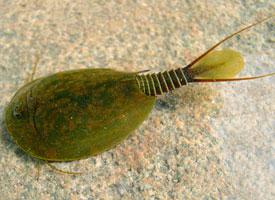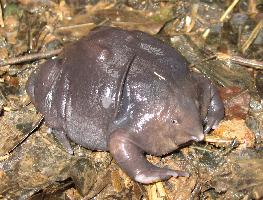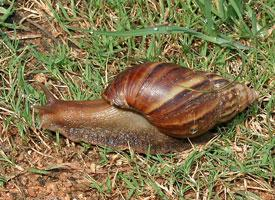
Váhy a míry
| Délka | od 3 do 5 cm |
|---|
Stav ohrožení
| Ohrožen |
Popis zvířete
The Tadpole shrimp, scientifically named Lepidurus apus, is a fascinating and prehistoric-looking creature that belongs to the order Notostraca. These living fossils have remained relatively unchanged for over 200 million years, providing a unique glimpse into the past. Their distinct appearance and intriguing life cycle make them a subject of interest among scientists and enthusiasts alike.Tadpole shrimps possess a broad, shield-like carapace that covers the front portion of their body, offering protection and giving them a somewhat tadpole-like appearance, hence their common name. This carapace is usually a brownish or olive green color, helping them blend into their muddy or sandy environments. Beneath the carapace, their elongated body is segmented, terminating in a forked tail. This structure is not only distinctive but also functional, aiding in their movement and feeding.
One of the most remarkable features of Tadpole shrimps is their size. They can grow up to 3 inches (about 7.5 cm) in length, making them one of the larger members of the branchiopod crustaceans. Their size, coupled with their ancient appearance, often surprises those who encounter them in their natural habitats.
Tadpole shrimps thrive in temporary freshwater pools, ponds, and ditches, especially those that dry up seasonally. Their ability to survive in these ephemeral water bodies is largely due to their unique reproductive strategy. They lay drought-resistant eggs that can remain dormant for several years, hatching only when conditions are favorable. This remarkable adaptation ensures their survival across cycles of drought and flooding, allowing them to inhabit environments that would be inhospitable to many other species.
Their diet is as varied as their habitat. Tadpole shrimps are omnivores, feeding on a mix of algae, detritus, and small invertebrates. They are equipped with a pair of specialized appendages near their mouth, which they use to filter particles from the water or scrape food off surfaces. This feeding behavior plays a crucial role in the ecosystem, as it helps to break down organic matter and cycle nutrients.
Despite their ancient lineage and fascinating biology, Tadpole shrimps face threats from habitat loss and environmental changes. Their reliance on temporary water bodies makes them particularly vulnerable to the impacts of climate change and human activity, such as land development and water pollution. Conservation efforts are essential to ensure the survival of these unique creatures and the ecosystems they inhabit.
In summary, the Tadpole shrimp, Lepidurus apus, is a captivating species that offers a window into the Earth's distant past. Its distinctive morphology, ancient lineage, and remarkable life cycle make it a subject of both scientific study and public fascination. As we strive to understand and protect these living fossils, we are reminded of the resilience of life and the importance of conserving the diverse habitats that sustain it.
Podobná zvířata
Nové fotografie zvířat
Top 10 zvířat
- Chinese water dragon (Physignathus cocincinus)
- Galápagos tortoise (Geochelone nigra complex)
- Dolphin gull (Leucophaeus scoresbii)
- Japanese macaque (Macaca fuscata)
- Colombian red howler (Alouatta seniculus)
- Sea urchins (Echinoidea)
- Moustached guenon (Cercopithecus cephus)
- Diana monkey (Cercopithecus diana)
- Common reed warbler (Acrocephalus scirpaceus)
- Common house mosquito (Culex pipiens)


